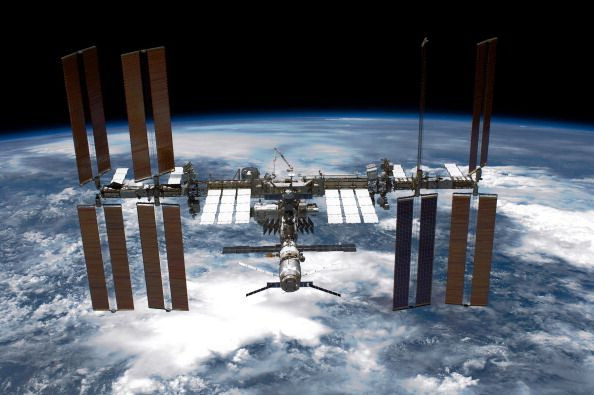ISS' Robotic Arm Damaged After Getting Hit By Orbital Debris
KEY POINTS
- Orbital debris hit the ISS' all-important Canadarm2
- The robotic arm incurred damage
- Its performance is said to be "unaffected"
- Even tiny orbital debris can pose threats because they can move very fast
An important part of the International Space Station (ISS) been damaged after getting hit by orbital debris. The damage doesn't appear to be substantial, but it shows the threat posed by such "junk."
The damage was discovered during an inspection of the ISS' Canadarm2 on May 12, the Canadian Space Agency (CSA) said in a statement. Canadarm2 is the CSA's contribution to the ISS and is essentially a robotic arm that performs various important tasks, from moving supplies and even astronauts to grabbing visiting vehicles then berthing them to the ISS.
Images of the hit show small damage, but it was quite a "lucky strike," considering that Canadarm2 only has a diameter of 14 inches.
Image of the impact. pic.twitter.com/Rd41Mz6pqx
— Ankit Panda (@nktpnd) May 28, 2021
Experts from both CSA and NASA worked together to "assess the impact." Fortunately, the hit didn't seem to have affected Canadarm2's functions.
"Despite the impact, results of the ongoing analysis indicate that the arm's performance remains unaffected," CSA said. "The damage is limited to a small section of the arm boom and thermal blanket."
Both agencies are still gathering data on the damage. For now, operations "will continue as planned."
The recent damage illustrates the problem posed by orbital debris, which NASA described as the "junk" orbiting the Earth. They can be as big as entire defunct satellites or as small as flecks of paint, although even the latter can pose a threat since most space junk is said to be moving quite fast.
According to NASA, they can reach the speed of 4.3 to 5 miles per second or about 18,000 miles per hour.
"That speed is almost seven times faster than a bullet," NASA said. "And if a spacecraft is moving toward the debris, the total speed at which they collide can be even faster."
In 2020, for instance, the ISS performed a maneuver to avoid colliding with debris, which turned out to be a piece of a Japanese rocket that had previously broken up into 77 pieces.
According to CSA, there are about 23,000 objects the size of a softball or even larger that are being monitored 24/7 to make sure they don't collide with the ISS or other functioning satellites.
"The threat of collisions is taken very seriously," CSA said. "NASA has a long-standing set of guidelines to ensure the safety of Station crew. The safety of astronauts on board the orbiting laboratory remains the top priority of all Station partners."

© Copyright IBTimes 2024. All rights reserved.






















